Discover 50 hidden attractions, cool sights, and unusual things to do in Chile. Don't miss out on these must-see attractions: La Moneda (Santiago de Chile), Cerro Santa Lucia (Santiago de Chile) or Edificio Armada de Chile (Valparaíso).
Below, you can find the list of the most amazing places you should visit in Chile.
Table of Contents
La Moneda, Santiago de Chile
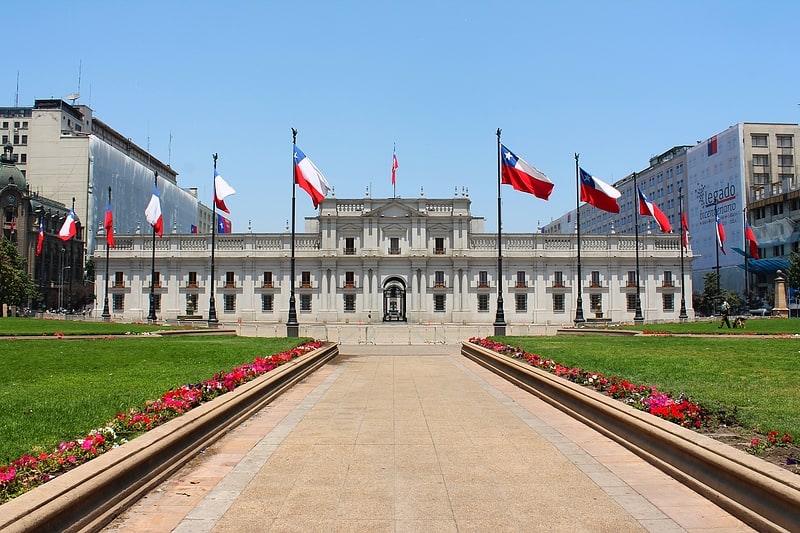
Stately office of Chile's president. Palacio de La Moneda, or simply La Moneda, is the seat of the President of the Republic of Chile. It also houses the offices of three cabinet ministers: Interior, General Secretariat of the Presidency and General Secretariat of the Government. It occupies an entire block in downtown Santiago, in the area known as Civic District between Moneda, Morandé, Alameda del Libertador Bernardo O'Higgins and Teatinos street.[1]
Address: Moneda S/N, Santiago de Chile (Santiago Centro)
Cerro Santa Lucia, Santiago de Chile
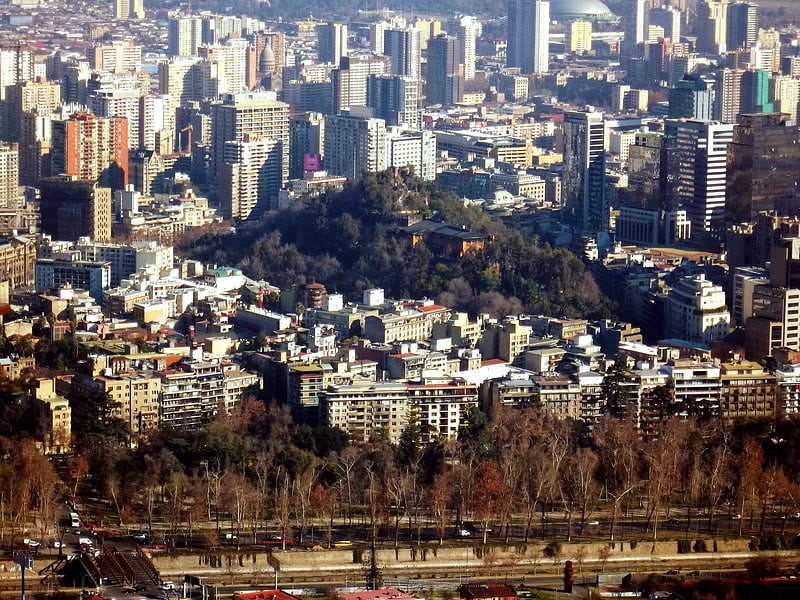
Also known as: Cerro Santa Lucía
Hill with a landscaped park and viewpoint. Santa Lucía Hill, also known in Mapuche as Huelén Hill, is a small hill in the centre of Santiago, Chile. It is situated between Alameda del Libertador Bernardo O'Higgins in the south, Santa Lucía Street in the west and Victoria Subercaseaux on the east. An adjacent metro station is named after it. The hill has an altitude of 629 m and a height of 69 m over the surrounding area. The hill is the remnant of a volcano 15 million years old.
The hill comprises a 65,300 square metre park adorned with ornate facades, stairways and fountains. At the highest point there is a viewpoint popular with tourists visiting the city.[2]
Address: Cerro Sta. Lucia 105, Santiago de Chile (Santiago Centro)
Edificio Armada de Chile, Valparaíso

The Edificio de la Comandancia en Jefe de la Armada de Chile, also known as Edificio de la Intendencia de Valparaíso, because it was a purpose-built Intendencia, is a building designed in an eclectic style with Renaissance Revival architecture elements, which rises 5 floors in height and covers 8,000 square metres. The main facade of the building faces the Plaza Sotomayor of Valparaíso and the Monument to the Heroes of Iquique.
The building has been the site of historical and social events, which were numerous and important. On January 23, 1979 it was declared a Historic Monument de Chile, at the same time both the Plaza Sotomayor and the surrounding buildings was declared a Zona Típica y de Protección.[3]
Address: 592 Sotomayor, Valparaíso
Mercado Central, Santiago de Chile
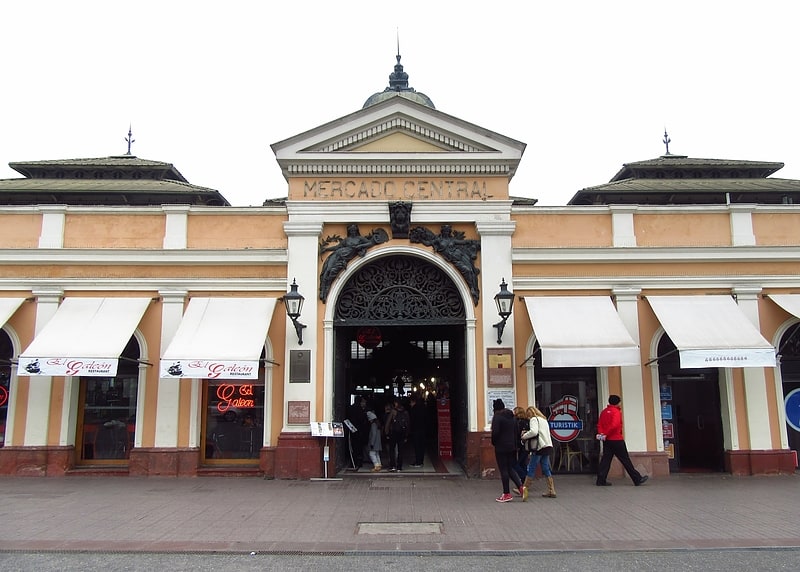
Market in Santiago, Chile. The Mercado Central de Santiago is the central market of Santiago de Chile. It was opened in 1872 and Fermín Vivaceta was in charge of its construction. The market replaced the Plaza del Abasto, which was destroyed by a fire in 1864.
The market is housed in a building in which its main feature is a cast-iron roof and supporting structure, which was fabricated by the Scottish firm R Laidlaw & Sons, Glasgow. Edward Woods and Charles Henry Driver took part in the design of the structure.
The metal structure stands on a square base and features a vaulted ceiling. Its intricate roof design consists of a central pyramidal roof crowned by a domed tower, which is surrounded by 8 smaller roofs with a two-tier design. The structure is enclosed by a masonry building.[4]
Address: San Pablo, Santiago de Chile (Santiago Centro)
Rano Raraku, Rapa Nui National Park
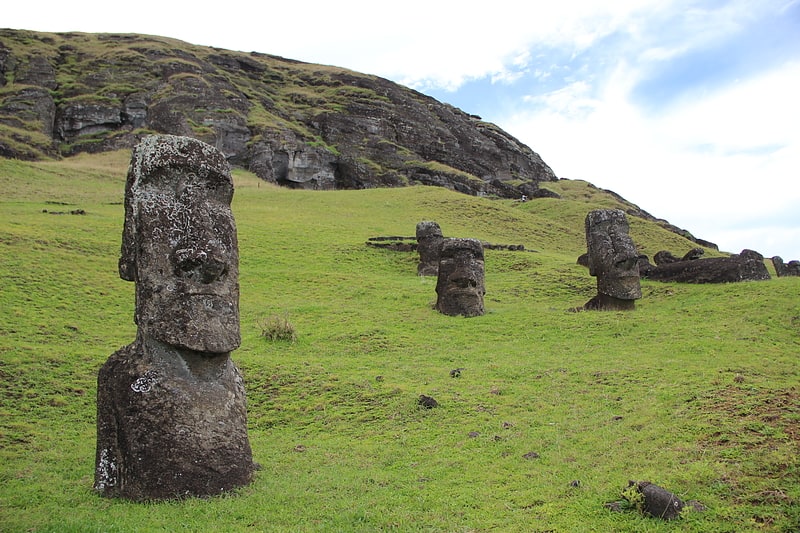
Archaeological site with iconic statues. Rano Raraku is a volcanic crater formed of consolidated volcanic ash, or tuff, and located on the lower slopes of Terevaka in the Rapa Nui National Park on Easter Island in Chile. It was a quarry for about 500 years until the early eighteenth century, and supplied the stone from which about 95% of the island's known monolithic sculptures were carved. Rano Raraku is a visual record of moai design vocabulary and technological innovation, where 887 moai remain. Rano Raraku is in the World Heritage Site of Rapa Nui National Park and gives its name to one of the seven sections of the park.[5]
Ahu Tongariki, Rapa Nui National Park
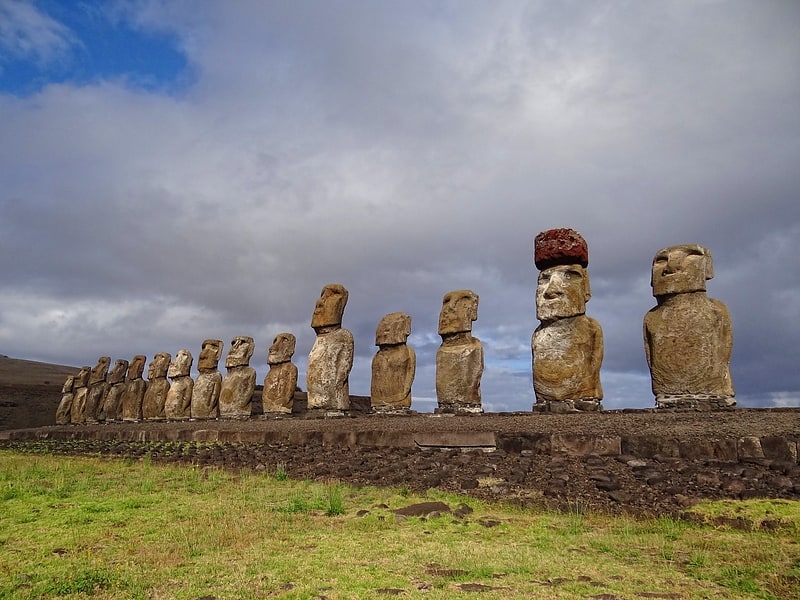
Famous stone statues and sunrise views. Ahu Tongariki is the largest ahu on Easter Island. Its moais were toppled during the island's civil wars, and in the twentieth century the ahu was swept inland by a tsunami. It has since been restored and has fifteen moai, including one that weighs eighty-six tonnes, the heaviest ever erected on the island. Ahu Tongariki is one kilometer from Rano Raraku and Poike in the Hotu-iti area of Rapa Nui National Park. All the moai here face sunset during the winter solstice.[6]
Salto Grande Waterfall, Torres del Paine National Park

Tourist attraction in Chile. The Salto Grande is a waterfall on the Paine River, after the Nordenskjöld Lake, within the Torres del Paine National Park in Chile. In the vicinity of Salto Grande are a variety of natural vegetation forms as well as certain wildlife species, including the wild guanaco.[7]
Address: Paine River, Torres del Paine National Park
Anakena, Rapa Nui National Park
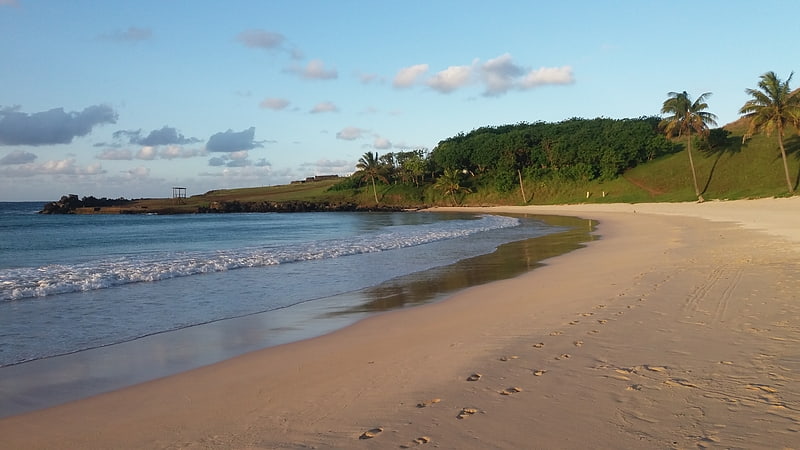
Beach in Chile. Anakena is a white coral sand beach in Rapa Nui National Park on Rapa Nui, a Chilean island in the Pacific Ocean. Anakena has two ahus; Ahu-Ature has a single moai and Ahu Nao-Nao has seven, two of which have deteriorated. It also has a palm grove and a car park.
Anakena is unusual for Easter Island in that it is one of only two small sandy beaches in an otherwise rocky coastline.[8]
Address: Rapa Nui, Rapa Nui National Park
Sacred Hearts Church, Valparaíso
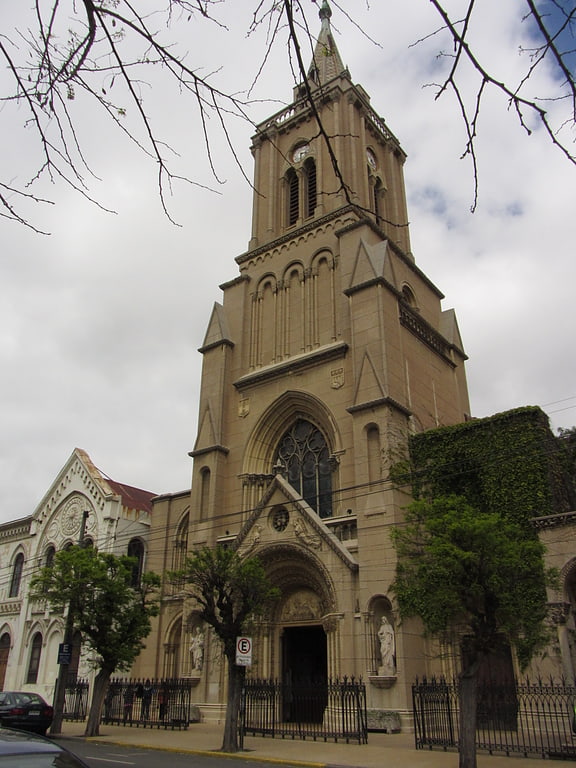
Church in Valparaíso, Chile. The Sacred Hearts Church is a Catholic church located at 2086 Independencia Street, in El Almendral neighborhood, in Valparaíso, Chile. Staffed by the Congregation of the Sacred Hearts of Jesus and Mary, it was built to serve as the church for the Colegio de los Sagrados Corazones de Valparaíso community. The church was declared as a National Monument of Chile in 2003, within the category of Historic Monuments.[9]
Plaza Sotomayor, Valparaíso
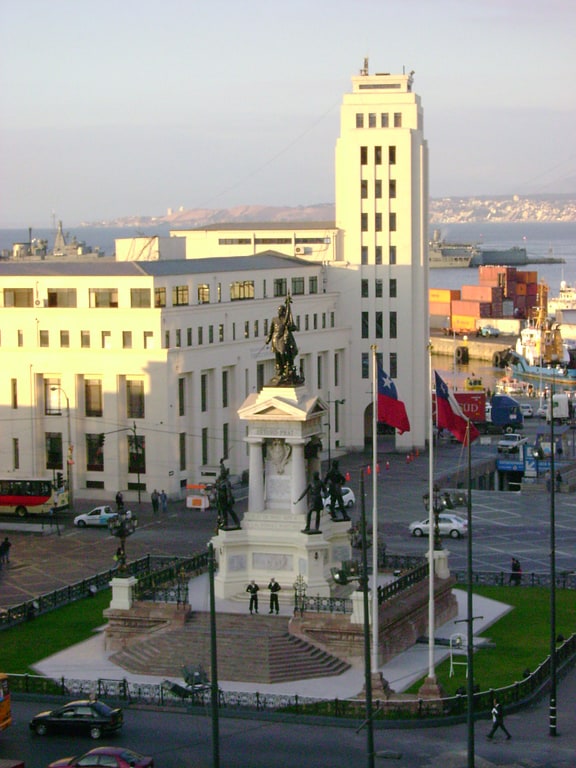
Park in Valparaíso, Chile. The Plaza Sotomayor is a plaza in Valparaíso, Chile. It is named after Rafael Sotomayor. The square is lined by buildings occupying full block-fronts of the streets that flank it. The focus of the square is the monument that honors the Chilean sailors who fell during the Battle of Iquique and the Battle of Punta Gruesa. The plaza and surrounding buildings was designated a Zona Típica on January 23, 1979.
At the northeastern side of the square are two similar towers, which create a sort of gate entrance to the port from the city. On the opposite side is the building that housed the Intendencia de Valparaíso, which currently is home to the headquarters of the Chilean Navy. The building used by the CSAV and the building that houses the National Council of Culture and the Arts also face the plaza.
Close to the station is the western terminus station of the Valparaíso Metro, that replaced the old railway station.[10]
Pukará de Quitor, San Pedro de Atacama
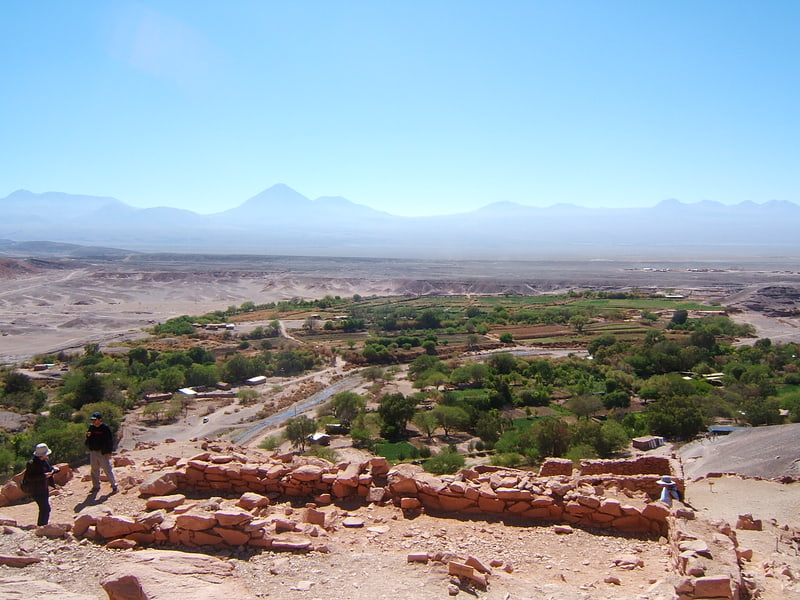
Also known as: Pucará de Quitor
Pre-Columbian stone fortress. Pukará de Quitor is a pre-Columbian archaeological site in northern Chile. This stone fortress is located 3 km northwest of the town of San Pedro de Atacama, overlooking the valley of the river San Pedro. It was designated a national monument in 1982.[11]
Quinta Vergara, Viña del Mar
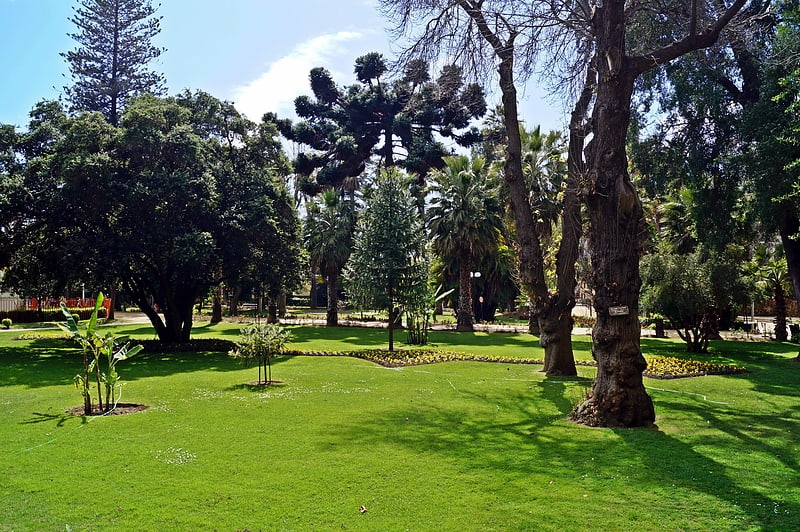
Park in Chile. Quinta Vergara is a park located in Viña del Mar, Chile. The park features three major landmarks: the Palacio Vergara, the Quinta Vergara Amphitheater and a garden. Every year the park is home to the Viña del Mar International Song Festival.[12]
R. P. Gustavo Le Paige Archaeological Museum, San Pedro de Atacama
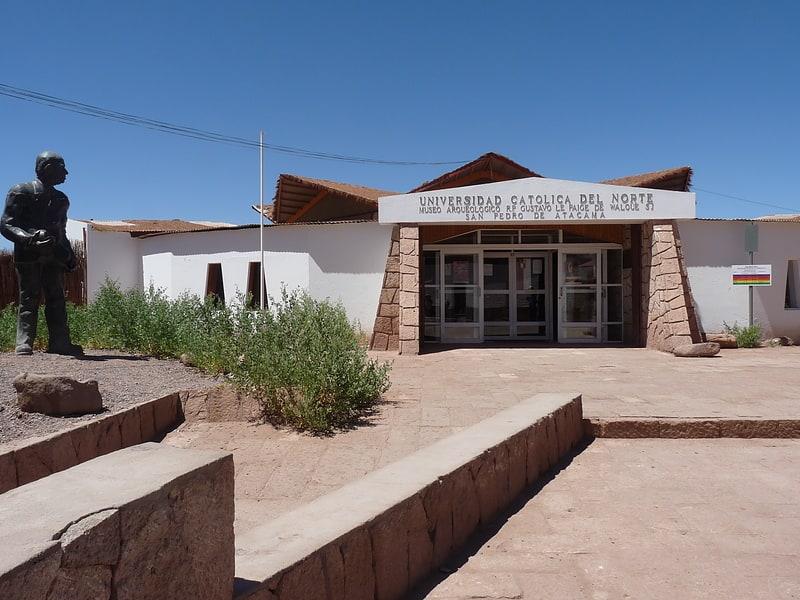
Also known as: Museo Arqueológico R.P. Gustavo Le Paige
Museum. R. P. Gustavo Le Paige Archaeological Museum is a museum located in San Pedro de Atacama, Chile. It houses a collection of about 380,000 pre-Columbian artifacts from the Atacameño culture. The museum is named after Jesuit missionary Father Gustavo Le Paige, who was its founder.
This museum belongs to the Catholic University of the North. It closed in September 2015 for refurbishment and redevelopment and reopened in late 2016.[13]
Address: Gustavo Le Paige 380, 1410000 San Pedro de Atacama
Lake Pehoé, Torres del Paine National Park
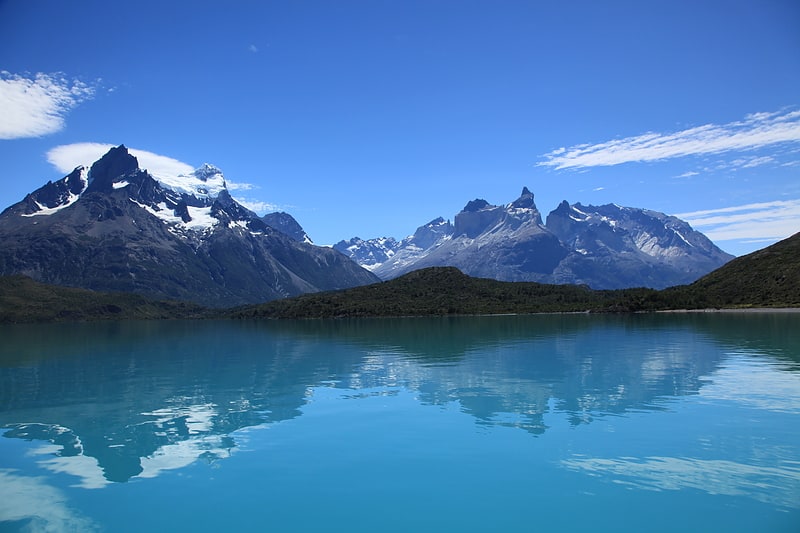
Also known as: Lago Pehoé
Lake in Chile. Lake Pehoé is a surface water body located in Torres del Paine National Park, in the Magallanes Region of southern Chile. The lake is fed mainly by Paine River through the Nordenskjöld Lake, but it also receives the waters of the outlet of Skottsberg Lake.
Paine River waters feeding the Pehoé Lake have emerged from the Salto Grande waterfall. In this upper reach of the Pehoe Lake watershed there are numerous flora and fauna, including grazing wild guanaco.[14]
Petrohué Waterfalls, Vicente Pérez Rosales National Park
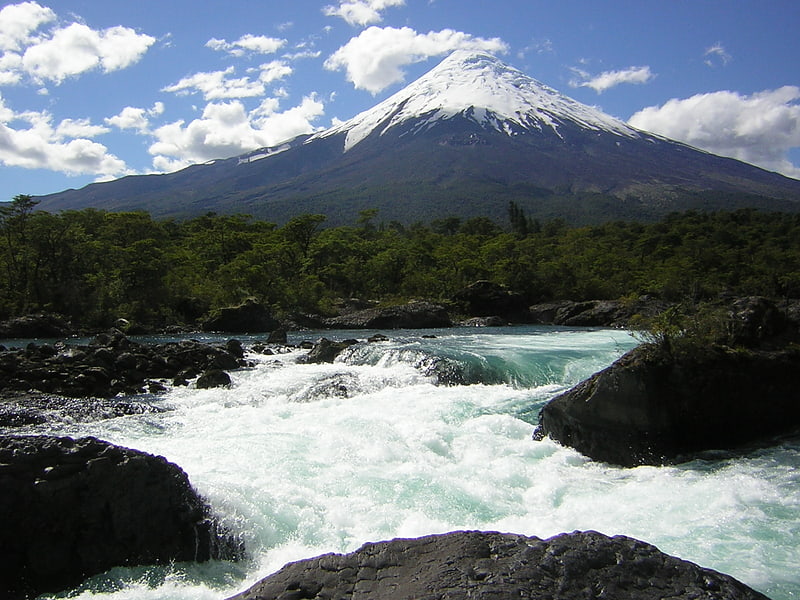
Petrohué Waterfalls is a chute-type waterfall in the upper reach of Petrohué River in Chile, a short distance downstream of the source of this river in Todos los Santos Lake. This waterfall is inside the Vicente Pérez Rosales National Park, close to the road leading to the Petrohue locality on lake Todos los Santos. Tourists on the international route between Puerto Montt in Chile and Bariloche in Argentina are generally offered a stop for a walk to enjoy the sights.
The waterfall is supported by basaltic lava (andesite) stemming from the Osorno Volcano that sits in between Todos los Santos and Llanquihue Lake and provides an interesting background for pictures. The average water flow of these falls is of 270 m3 per second, but it can be much larger during the rainy season when the surface level of lake Todos los Santos rises by up to 3 meters. The water, decanted in the lake, is usually clear with a green hue; however, occasionally, when lahars descending from the volcano are active, water at the falls can be loaded with sand and silt. Transport of these abrasive materials explains the polished aspect of the rocks.
Attentive visitors may spot a couple of torrent ducks mastering the rapids, with their chicks when in season.[15]
Wulff Castle, Viña del Mar
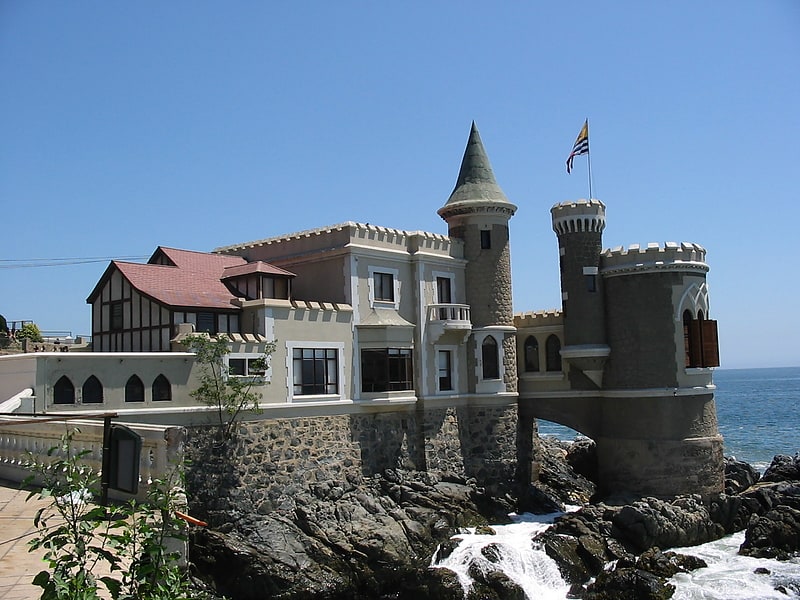
Also known as: Castillo Wulff
Tourist attraction in Viña del Mar, Chile. Wulff Castle is a historic castle overlooking the sea in Viña del Mar, Chile. It was built in 1906 for the Wulff family. It is the headquarters of the city heritage center.[16]
Address: Viña del Mar, 37 Marina Avenue
Anfiteatro de la Quinta Vergara, Viña del Mar
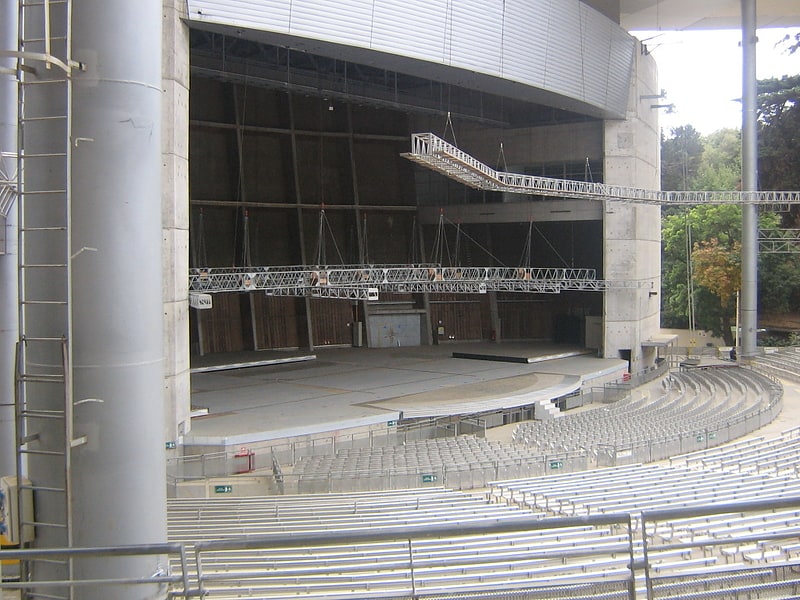
Concert hall in Chile. The Quinta Vergara Amphitheater is an open-air amphitheater within the Parque Quinta Vergara in Viña del Mar, Chile. The amphitheater is the site of the Viña del Mar International Song Festival held yearly in February. The venue is owned by the Viña del Mar Municipality.[17]
Address: Errázuriz 563-596, 2362283 Viña del Mar
Osorno Volcano, Vicente Pérez Rosales National Park
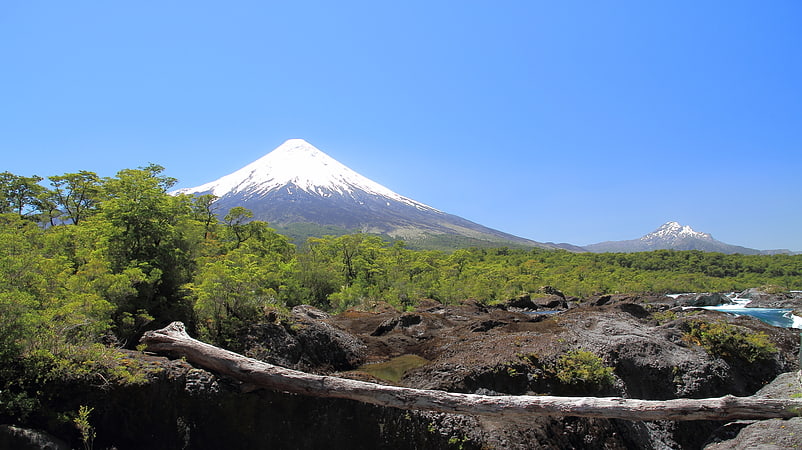
Also known as: Volcán Osorno
Famous active volcano with glaciers. Osorno Volcano is a 2,652-metre tall conical stratovolcano lying between Osorno Province and Llanquihue Province, in Los Lagos Region of Chile. It stands on the southeastern shore of Llanquihue Lake, and also towers over Todos los Santos Lake. Osorno is considered a symbol of the local landscape and as such, tends to be the referential element of the area in regards to tourism.
Osorno is one of the most active volcanoes of the southern Chilean Andes, with 11 historical eruptions recorded between 1575 and 1869, including an eruption on January 19, 1835, which was witnessed by British Naturalist, Charles Darwin. The basalt and andesite lava flows generated during these eruptions reached both Llanquihue and Todos los Santos Lakes. The upper slopes of the volcano are almost entirely covered in glaciers despite its very modest altitude and latitude, sustained by the substantial snowfall in the very moist maritime climate of the region. This mountain also produces pyroclastic flow, since it is a composite volcano.
Osorno sits on top of a 250,000-year-old eroded stratovolcano, La Picada, with a 6-km-wide caldera.[18]
Nordenskjöld Lake, Torres del Paine National Park
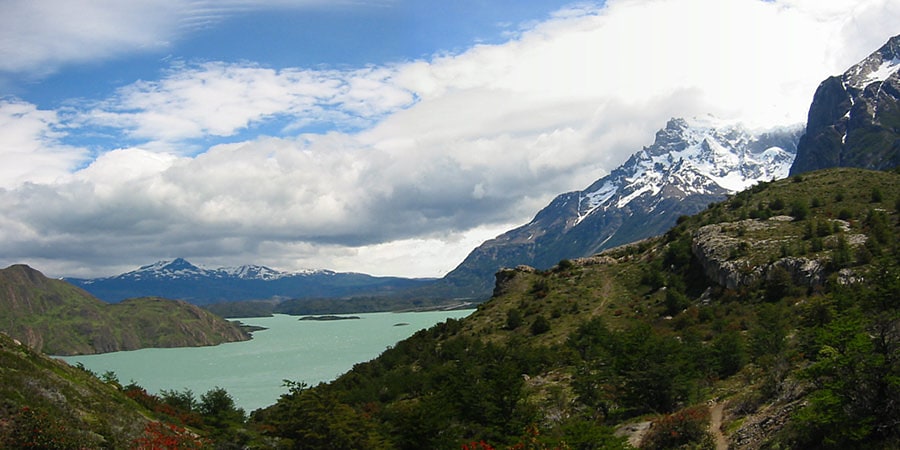
Also known as: Lago Nordenskjöld
Lake in Chile. The Nordenskjöld is a lake in Torres del Paine National Park in the Magallanes Region, southern Chile. The lake is named after the Swede Otto Nordenskiöld who discovered the lake in the beginning of the 20th century. The outfall of Nordenskjöld Lake consists of a waterfall known as Salto Grande. At this western end of the lake on the southern side is an abundance of wildlife including wild grazing guanaco.[19]
Agustín Ross Cultural Centre, Pichilemu

Also known as: Centro Cultural Agustín Ross
Center with art exhibits and a library. Agustín Ross Cultural Centre, previously known as Casino Ross, is the cultural center of the city of Pichilemu in Libertador General Bernardo O'Higgins Region, Chile. It was constructed between 1906 and 1909 at the request of politician Agustín Ross Edwards. The structure of the cultural center is very similar to that of the Grand Trianon in Versailles, France.
It is best known for housing one of the first casinos of Chile; a casino operated in the building between 1917 and 1931. After 1931 all casinos, except the newly opened Casino de Viña del Mar, were declared illegal. The building has also been used as a post office, a store selling imported goods, a hotel, a discotheque, and a bar. There were two attempts by the local government to purchase the building; the first time in 1982 failed while the second in 1995 succeeded. The former casino was declared a National Monument of Chile along with the Agustín Ross Park in February 1988.
Over time, the building deteriorated, and a project was approved in January 2007 for it to be renovated for use as a cultural center. The restored building opened in January 2009 and houses the local library. In January 2010, the cultural center was inaugurated by President Michelle Bachelet and Mayor Roberto Córdova.[20]
Address: Pichilemu, Agustín Ross Avenue, in front of the Agustín Ross Park
Cementerio Municipal de Punta Arenas, Punta Arenas
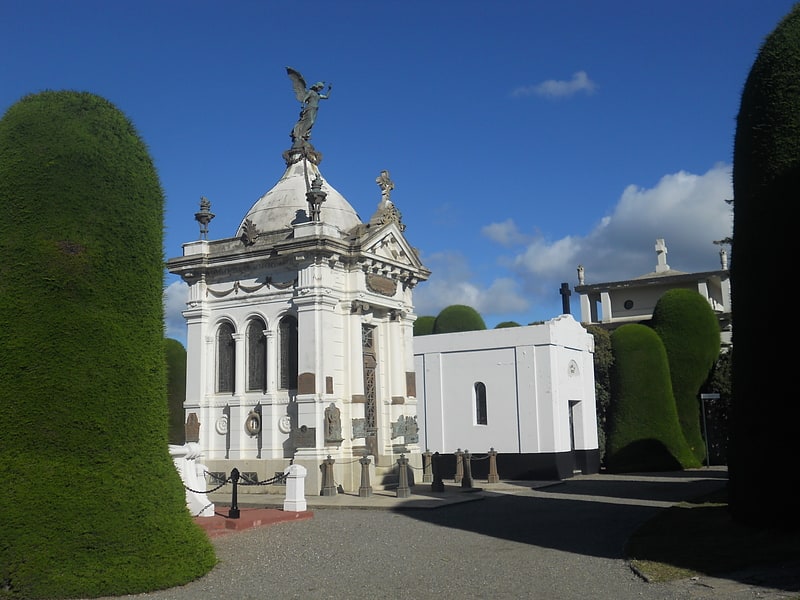
Cemetery in Punta Arenas, Chile. Cemetery of Punta Arenas Sara Braun is the public cemetery of the city of Punta Arenas, Chile. It has four hectares and is located in the northern area of the city, in Bulnes Avenue, and between the streets Francisco Bilbao and Angamos. There are three entrances: the main entrance is in Bulnes Avenue, and two other entrances are in Francisco Bilbao and Angamos streets. Since the cemetery had long ago reached its capacity, it has been supplemented and largely replaced by a controversial newer cemetery further to the north of the city, though the earlier site retains its status as a "monument cemetery."
The cemetery has been ranked by CNN as one of the most beautiful cemeteries in the world. It was designated a National Monument of Chile in 2012.[21]
Lighthouse of La Serena, La Serena
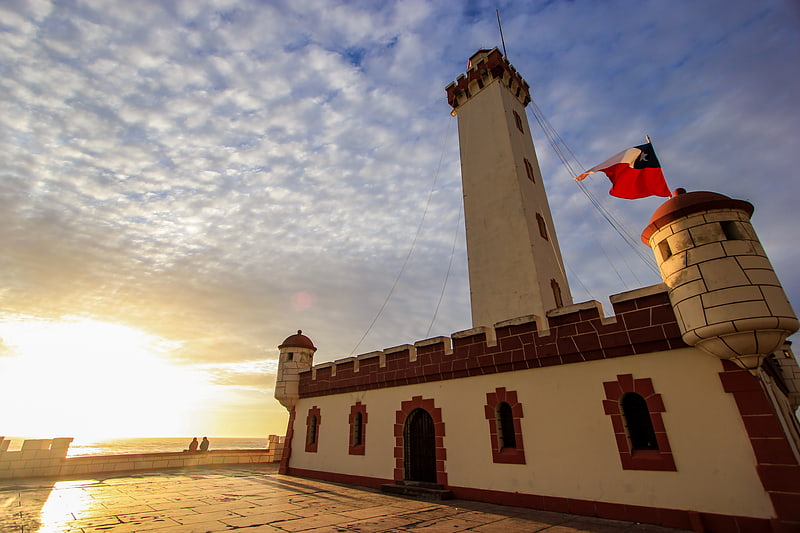
Also known as: Faro Monumental de La Serena
Lighthouse in La Serena, Chile. The Monumental Lighthouse of La Serena is a Chilean lighthouse located at the Avenida del Mar of La Serena. The structure is one of the most representative of the city and one of the most popular tourist attractions in the area.[22]
Address: Av. del Mar, La Serena
Iglesia San Francisco, Castro
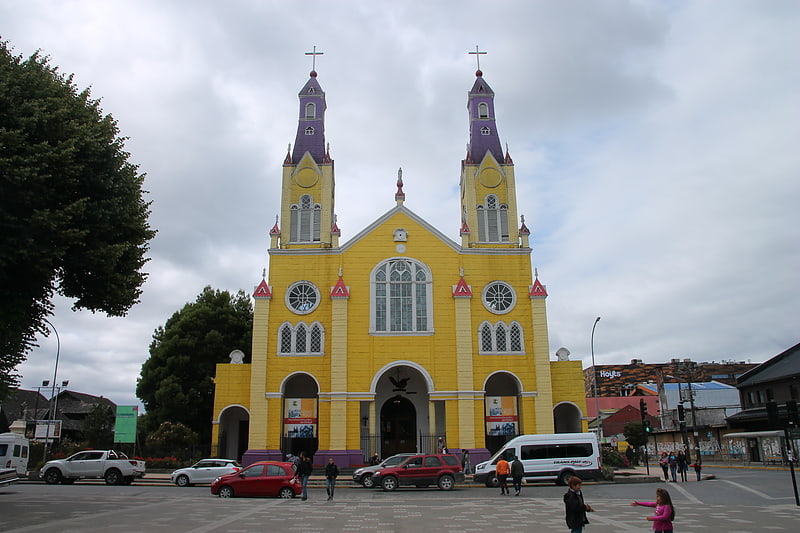
Also known as: Iglesia de San Francisco
Catholic church in Castro, Chile. The Church of San Francisco, located on one side of the Plaza de Armas of Castro, Chile, is the main Catholic church of Chiloé’s capital. It has a surface area of 1,404 m2, a width of 52m and a height of 27m. The dome above the church's presbytery is 32m high and the height of its towers is 42m. The church is also known as the Iglesia Apóstol Santiago and erroneously as the “cathedral”, which is actually to be found in Ancud, headquarters of the diocese of the same name. The Church of San Francisco does however lead one of the 24 parishes that form this diocese.
The church was declared a Chilean National Monument in 1979 and UNESCO World Heritage Site on 30 November 2000.[23]
Address: Plaza de Armas, Castro
Iglesia Santo Domingo, La Serena
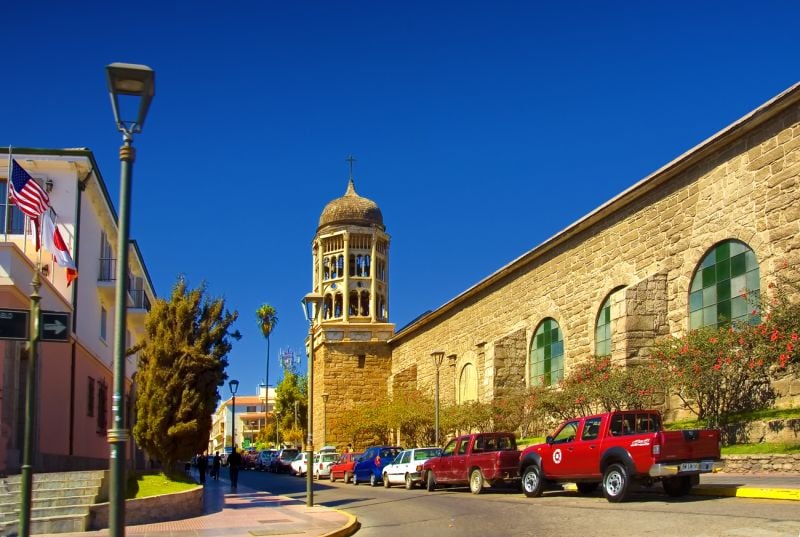
The Iglesia de Santo Domingo is a Catholic church at 235 Gregorio Cordovez Street, between Manuel Antonio Matta and Pedro Pablo Muñoz streets, in the historic quarter of La Serena, Chile. It was declared a National Monument of Chile on May 16, 2001.
It is one of the five colonial churches built of stone in the city. The church was built between the 17th and 18th centuries in Mannerist style. But its eclectic bell tower was erected in the second half of the 19th century.[24]
Church of San Pedro de Atacama, San Pedro de Atacama
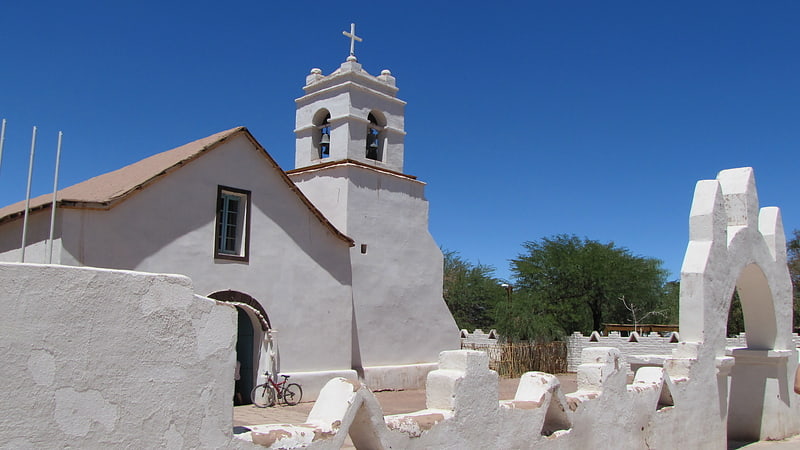
The Church of San Pedro de Atacama is a Catholic church in San Pedro de Atacama, Chile. Constructed during the Spanish colonial period, it is reportedly the second oldest church in Chile. Indigenous adobe material was used in the church's construction, whose appearance is characterized as simple and elegant. The church was built in the seventeenth century, underwent modifications in the eighteenth century, and additions were made in the nineteenth century. The church was declared a historical monument in 1951.[25]
Address: Caracoles 362, San Pedro de Atacama
Central market of Concepción, Concepción
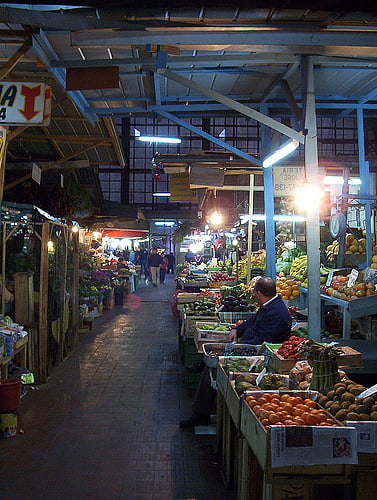
The Central market of Concepción is a marketplace of fruits and vegetables with restaurants in the downtown area of Concepción. The area of the Central market is 3.600 m2. After the earthquake of Chillán on 1939, the Central market was designed on 1940 by the architects Tibor Weiner and Ricardo Mulle.[26]
Address: Freire, Concepción
Iglesia de San Francisco, La Serena

The Iglesia de San Francisco is a Catholic church located in La Serena, Chile. It was declared a National Monument of Chile in 1977.[27]
Address: Balmaceda 640, La Serena
Museo Nao Victoria, Punta Arenas
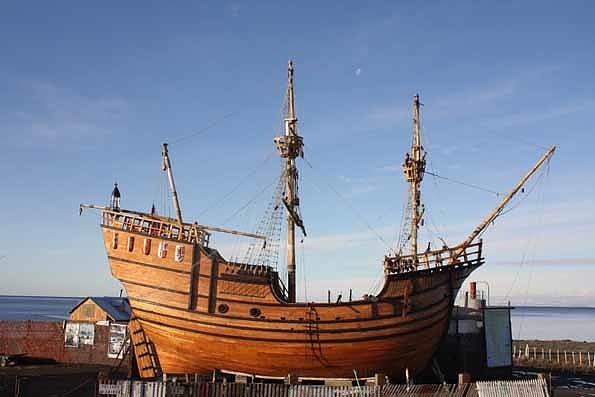
Interactive museum using ship replicas. The Nao Victoria Museum is located in Punta Arenas, Chile, and has been open to the public since 1 October 2011. The museum is private, the owner has received the Medal of the President of Chile for his work in promoting national identity during the celebrations for the bicentenary of the independence of the South American country. Spanish Vice Consul in Punta Arenas gave the entrepreneur the prize "Hispanic Identity" for the building of the Nao Victoria Replica.[28]
Address: km 7,5 norte sitio 2A, Punta Arenas
Tahai Ceremonial Complex, Hanga Roa
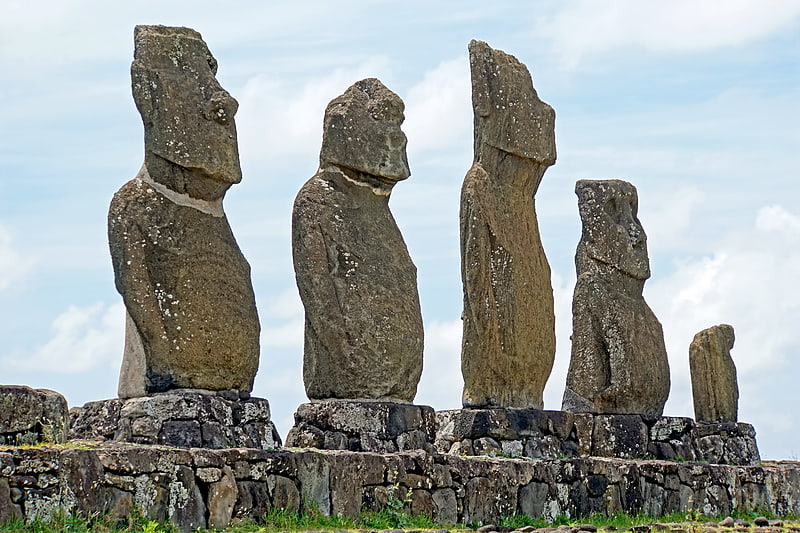
Monument in Hanga Roa, Chile. The Tahai Ceremonial Complex is an archaeological site on Rapa Nui in Chilean Polynesia. Restored in 1974 by American archaeologist William Mulloy, Tahai comprises three principal ahu from north to south: Ko Te Riku, Tahai, and Vai Ure. Visible in the distance from Tahai are two restored ahu at Hanga Kio'e, projects that Mulloy undertook in 1972. Like other Mulloy restoration projects at Ahu Akivi, the ceremonial village of Orongo and Vinapu, the ceremonial center at Tahai now constitutes an integral part of the Rapa Nui National Park, designated by UNESCO as a World Heritage site.
William Mulloy and Emily Ross Mulloy are buried at Tahai.[29]
Address: Rapa Nui, Hanga Roa
Pedro de Valdivia Bridge, Valdivia

Also known as: Puente Pedro de Valdivia
Arch bridge in Chile. Pedro de Valdivia Bridge is an arch bridge spanning Valdivia River, that separates downtown Valdivia from Isla Teja island a residential area. Together with Río Cruces Bridge it allows connection from Valdivia to the coastal town Niebla.
Pedro de Valdivia Bridge is named in honour of the founder of Valdivia the Spanish conquistador Pedro de Valdivia. It was opened in 1954 and survived the Great Chilean earthquake, the greatest earthquake ever recorded, while nearby buildings collapsed. After the earthquake it survived the effects of the Riñihuazo, a flooding caused by the earthquake.[30]
Playa Cavancha, Iquique
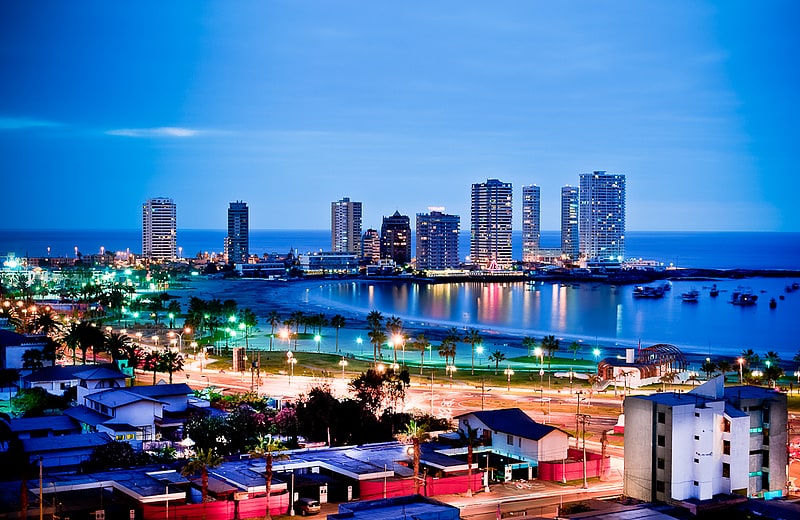
Cavancha beach is a Pacific Ocean beach located in the Tarapacá Region, in northern Chile. Cavancha is an exclusive and traditional Iquique sector, as well as an important point of tourism and entertainment.
Address: Av. Arturo Prat, Iquique
St. Mark's Cathedral, Arica

Also known as: Catedral de San Marcos de Arica
Building in Arica, Chile. The St. Mark's Cathedral also called Arica Cathedral is a Catholic church that is located in the city of Arica in the far north of Chile. The building was a commission by the government of the Peruvian President José Balta to the workshops of the Frenchman Gustave Eiffel and originally intended for Ancon resort.
The old mother church of Arica stood for 226 years, until the colony was destroyed by an earthquake on August 13, 1868. Because of this, a committee of ladies of Arica asked Balta that a new construction be designed for Arica. The request was accepted and the building was inaugurated in 1876 on the ruins of the old mother church.
In 1880, the city of Arica was occupied by the Chilean Army; however, until the early twentieth century, the parish of Arica remained part of the diocese of Arequipa, according to the orders of the Holy See. On February 27, 1910, the mayor of Arica, Maximo Lira, decreed the expulsion of Juan Vitaliano Berroa, parish priest of Arica and his assisting priest Juan Gualberto Guevara, being Peruvian, replacing them with Chilean military chaplains. The jurisdiction of Arica went to the Vicariate General Castrense of Chile and soon after (1911) was annexed to the Vicariate Apostolic of Tarapaca (current Diocese of Iquique).[31]
Address: Francisco Bolognesi 196, Arica
Magallanes National Reserve, Punta Arenas
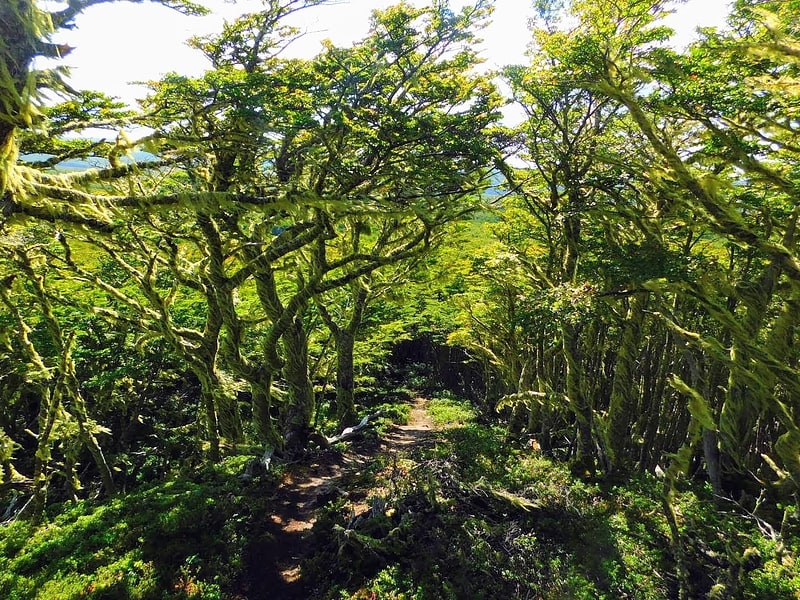
National reserve in Chile. Magallanes National Reserve is a national reserve of southern Chile's Magallanes and Antártica Chilena Region. It was created on February 13, 1932.[32]
Immaculate Conception Cathedral, Iquique
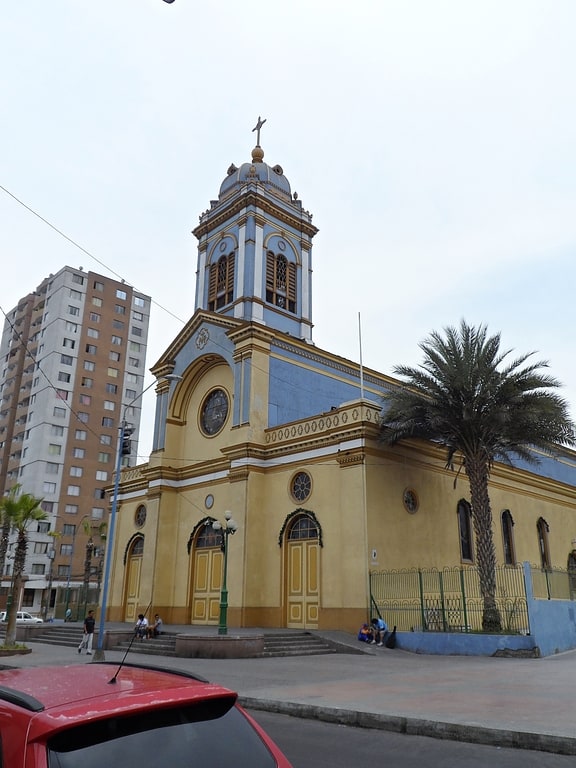
Also known as: Catedral de Iquique
Cathedral in Iquique, Chile. The Immaculate Conception Cathedral also called Iquique Cathedral It is a cathedral church of Catholic worship, home of the Roman Catholic Diocese of Iquique in the northern part of the South American country of Chile. It was consecrated in 1882 under the patronage of the Immaculate Conception of Mary.
It was built thanks to the fund campaign initiated by the Apostolic Vicar Camilo Ortuzar, after the parish church of Iquique was destroyed by fire on May 10, 1833. In May 1884 the remains of Arturo Prat and others who fell in the naval Battle of Iquique were transferred to the temple, where they remained until moved to Valparaiso in 1888, and in 1885 its construction was completed. In 1929, due to the creation of the Diocese of Iquique, the church acquired the rank of Cathedral.
In 1989 the cathedral, together with the parochial houses attached to it, was declared a historical monument (Monumento histórico).[33]
Mohammed VI Mosque, Coquimbo
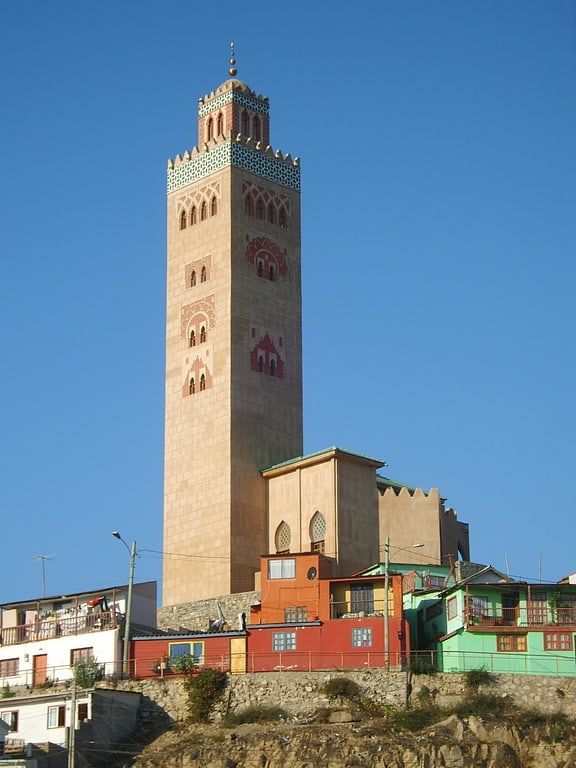
Mosque in Coquimbo, Chile. The Mohammed VI Center for Dialogue of Civilizations is a mosque in Coquimbo, Chile. The structure is a replica of the Kutubiyya Mosque in Marrakesh. It was funded by the Kingdom of Morocco and the municipality of Coquimbo, being named in honor of king Mohammed VI of Morocco. The mosque receives 25 thousand visitors every year.
Construction began in 2004, led by Moroccan architect Faissal Cherradi, and finished in 2007. The building was inaugurated by then mayor of Coquimbo Oscar Pereira and Moroccan delegates.
The complex also contains a cultural center, a library and a museum. A renovation project funded by the municipality of Coquimbo and the embassy of Morocco in Chile began in 2019.[34]
Address: Independencia 171, Coquimbo
Our Lady of the Rosary Cathedral, Valdivia
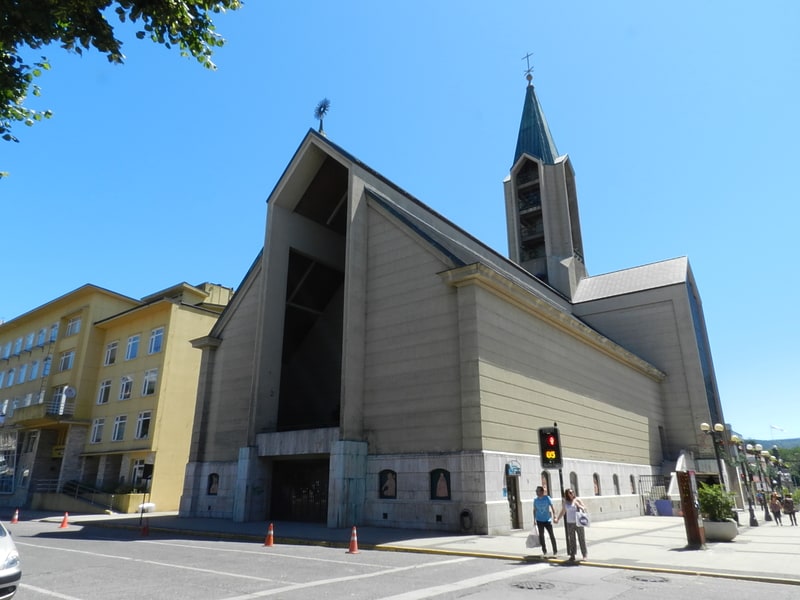
Also known as: Catedral de Valdivia
Church in Valdivia, Chile. The Our Lady of the Rosary Cathedral Also Valdivia Cathedral Is the main Catholic church of the Valdivia diocese, built in the center of the homonymous city of Valdivia, in the South American country of Chile.
The Cathedral of Valdivia is located on one side of the Republic Square (Plaza de la República), in the center of the city. The building of the cathedral currently houses, on its second floor, the Cathedral Temple; In its first floor, a chapel where the Eucharist is celebrated, the Crypt of the Bishops, a wake and the offices and dependencies of the Parish of Our Lady of the Rosary; And in the zócalo, a Museum that conserves different religious objects.
The cathedral is erected in the place where the main Catholic temples of the city have been located, being the thirteenth main Church that has had the city of Valdivia. The different cataclysms that the city has suffered many times destroyed its main temple. The earthquake of 1960 completely destroyed the previous cathedral, built in 1911; The current building dates from 1988.[35]
Address: Vicente Perez Rosales, Valdivia
Estadio Regional de Antofagasta, Antofagasta

Also known as: Estadio Regional Calvo y Bascuñán
Sports facility in Antofagasta, Chile. Estadio Regional de Antofagasta, officially Estadio Regional Bicentenario Calvo y Bascuñan de Antofagasta, is a sport facilities complex located in Antofagasta, Chile. The municipality of Antofagasta is the owner of the building and it used to host sports events such as cultural events and entertainment events. The complex is composed of the Main Stadium who is use made for most important events. The secondary fields, 1, 2, 3 and 4, are used for training sessions. The Field 5 is used to secondary events, with football pitch dimensions and counts with a Baseball field where are made the regional tournaments of this sport.
It is currently the home stadium of the Football Team of the city, Club de Deportes Antofagasta, of Chilean Primera División. The Chile national football team plays for the first time in this stadium on April 28, 2004, in a friendly match with the Perú. With an attendance of 32.000 spectators.
The Complex was built in 1964 by the Municipality of Antofagasta and supported by the Regional Stadium Construction Committee (Comité Pro Construcción Estadio Regional) the main stadium of this complex had an initial capacity of 35.000 spectators, after de renovation, In 2011 started the renovation of the stadium changed the maximum of capacity to 21,178 spectators since in 2013.
In February 2010, by requests from the community of Antofagasta that began in 2003, the mayor of the city called to the community to send names to name the stadium through popular votation to elect this. The winning the name was "Estadio Calvo y Bascuñan".
The stadium has been a venue for the 1987 FIFA World Youth Championship, 2013 Supercopa de Chile, Copa Sudamericana 2013 and Copa América 2015.[36]
Fort Lambert, Coquimbo

Tourist attraction in Coquimbo, Chile. Fort Lambert is a nineteenth century fortification sited on the "Castillo del Carmen" hill at the northern end of Coquimbo bay on the eastern side of the peninsular accommodating the old heart of Coquimbo in central Chile. This part of the city is known as "Punta Pelícanos" because just off the coast there is a small island inhabited by pelicans.
Fort Lambert no longer has an operational role militarily, but it is a popular tourist destination because of the views it provides across the Bay of Coquimbo.[37]
Address: Camino al Fuerte Lambert s/n, Coquimbo
Río Cruces Bridge, Valdivia
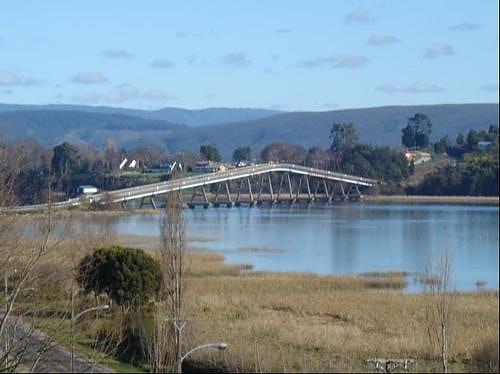
Bridge in Chile. Río Cruces Bridge is a triangular bridge spanning Cruces River that unites Isla Teja from Torobayo, a sub-urban area of Valdivia. Together with Pedro de Valdivia Bridge it allows connection from Valdivia to the coastal town Niebla. Before the opening of Río Cruces Bridge the main access to Niebla was via a ferry from La Mulatas to Torobayo. Other areas that benefited from the bridge were Punucapa and Curiñanco.
It was built from December 1984 to February 1987.[38]
Estadio Municipal de Concepción, Concepción

Also known as: Estadio Municipal Alcaldesa Ester Roa Rebolledo
Multi-purpose stadium in Concepción, Chile. Estadio Alcaldesa Ester Roa Rebolledo is a multi-purpose stadium in Concepción, Chile. It is used mostly for football matches. The stadium was built in 1962, as Estadio Regional, with an original capacity of 35,000 people. In 2015, it was completely renovated with new seats and a roof; currently has a capacity of 30,448 seats.
Until 2010 it was known as Estadio Municipal de Concepción. The stadium took its new name, Ester Roa Rebolledo, who was a former Concepción city mayor.
The stadium was being renovated by Spanish company COPASA, but in May 2014, after continuing delays, the contract was terminated. In September 2014 the municipality of Concepción hired Chilean company Claro Vicuña Valenzuela to finish the works. The stadium was not completed in time to host two 2015 Copa América group stage matches, which were moved to Santiago's Estadio Monumental David Arellano. It was finally reopened on 25 June 2015, in time to host three Copa América matches.
The Ester Roa is currently the home stadium for Universidad de Concepción, Fernández Vial and Deportes Concepcion; Huachipato and Lota Schwager has also played some important home games at the stadium.
The highest ever recorded attendance was 43,340 on November 12, 1967 at the Primera Division match between Huachipato and Colo-Colo.
The stadium was also featured as a Copa América venue when the 1991 tournament was held in Chile.
In October 1987, the stadium was one of the venues for the FIFA U-20 World Cup.
In January 2004, it co-hosted the South American Pre-Olympic Tournament.
In October & November 2015, the stadium was one of the venues for the FIFA U-17 World Cup.
The stadium is also occasionally used for music concerts and athletics tournaments.[39]
Puna Pau, Hanga Roa

Tourist attraction in Chile. Maunga Puna Pau is a small crater or cinder cone and prehistoric quarry on the outskirts of Hanga Roa in the south west of Easter Island. Puna Pau gives its name to one of the seven regions of the Rapa Nui National Park.
Puna Pau was the sole source of the red scoria that the prehistoric Rapanui used to carve the pukao (topknots) that they put on the heads of some of their iconic moai statues. The stone from Puna Pau was also used for ahu facia blocks and a non-standard moai found in front of one of the ahu at Vinapu. It was not, contra Wikipedia, used to fashion the crouching moai Tukuturi at Rano Raraku, which is of Rano Raraku tuff.
Archaeological excavations were carried out at Puna Pau between 2009 and 2013by members of the UK Rapa Nui Landscapes of Construction Project team.
The photo shown here is of the re-erected moai on Ahu Kote Riku, part of the Tahai ceremonial complex, not Ahu Tahai, and the topknot is not the original of Puna Pau red scoria, which is now in Hanga Roa cemetery, but a replacement made of red scoria from another location.[40]
Playa El Laucho, Arica
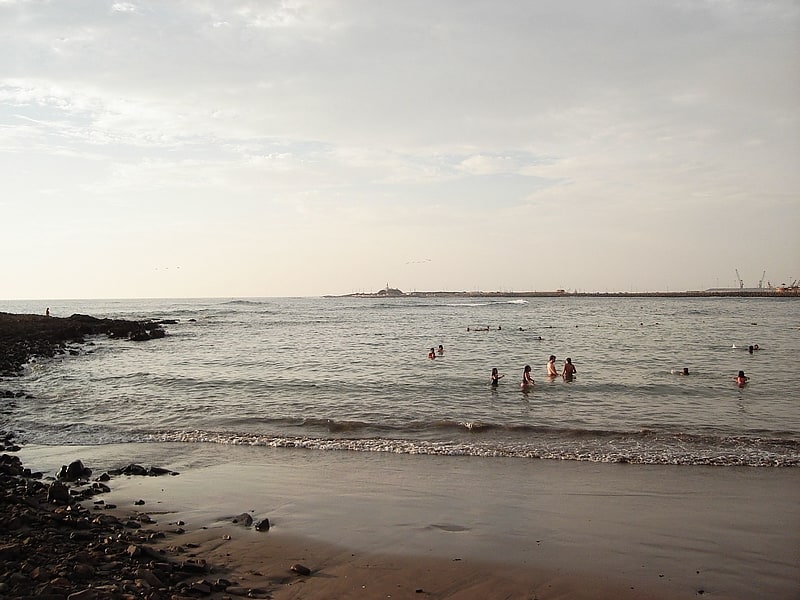
El Laucho Beach is a Pacific Ocean beach located in the Arica and Parinacota Region, Chile.
It is located south of the urban area of Arica and is adjacent to the Alacrán beach on the Alacrán peninsula.
It is a small beach suitable for bathing, but this condition is extended in some meters, because in the surroundings there are rocks. It is protected from the wind, and has a very gentle waves, with mild temperatures and white sand. It has resting places, restaurants, pubs and discotheques. It is equipped with bathrooms, showers, dressing rooms and lifeguard service.
It belongs to the trio of beaches suitable for bathing and better equipped Arica, along with La Lisera and Chinchorro. It is accessed by Comandante San Martín Avenue to the south.
Address: Av Comandante San Martín, Arica
Former Arica Custom House, Arica

The Former Arica Custom House, known presently as Casa de la Cultura de Arica, is a building located in Arica, Chile. Designed by Gustave Eiffel's company, it was built between 1871 and 1874, prior to the annexation of Arica by Chile. The building was declared a National Monument of Chile on November 23, 1977, within the category of Historic Monuments.[41]
Address: Manuel González, Arica
Parque Ross, Pichilemu
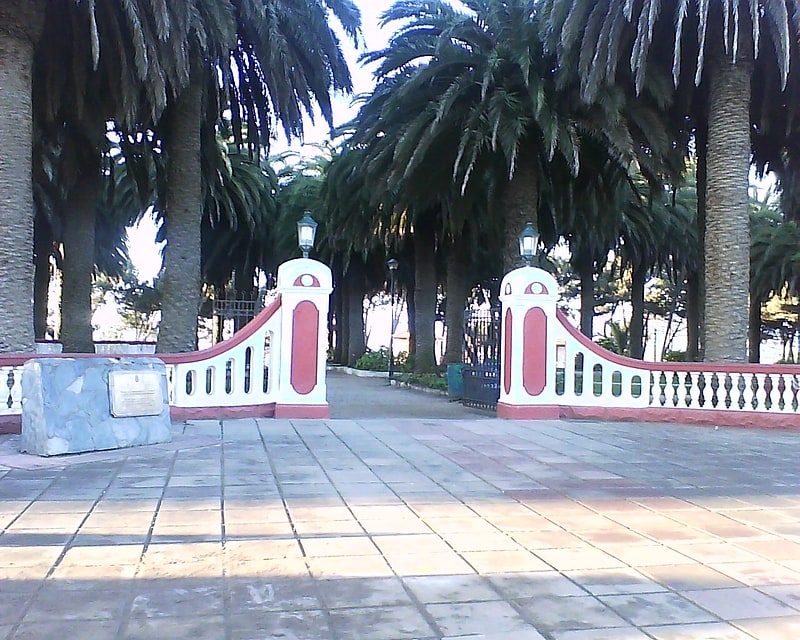
Park in Pichilemu, Chile. Agustín Ross Park is a park located in the Agustín Ross Avenue, in front of the old Ross Casino, in Pichilemu. It is a National Monument of Chile.
The original park contains 100-year-old native Canary Island Date palms (Phoenix canariensis) and many green spaces. Both the park and the former casino were named National Monuments on February 25, 1988, and the majority of the houses situated in the park are private homes. It has become an attractive walking destination, following its restoration.
The Park was severely damaged after the 2010 Pichilemu earthquake, with all of the balustrades surrounding the park being destroyed.[42]
Address: Pichilemu, Av. Agustín Ross, in front of the Agustín Ross Hotel
Cruz del Tercer Milenio, Coquimbo
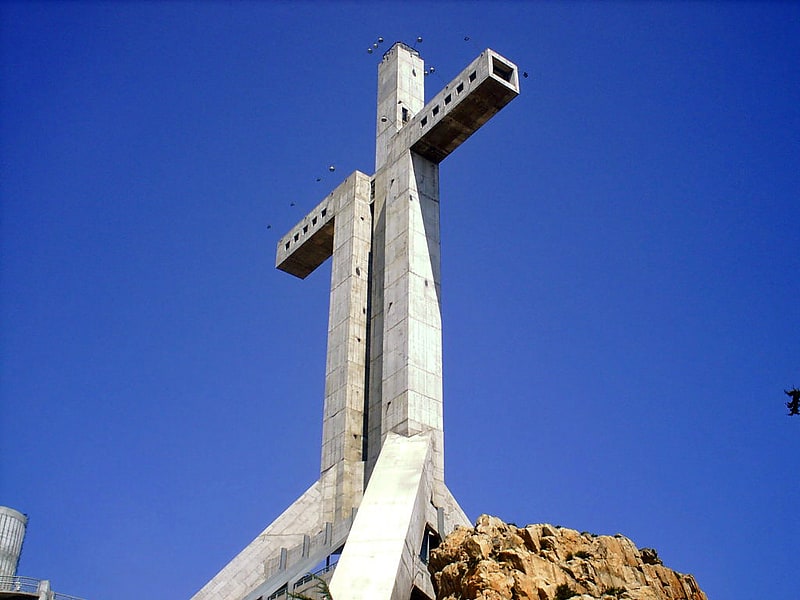
Monument in Coquimbo, Chile. Cruz del Tercer Milenio is an 83 meter tall, 40 meter wide, concrete cross located at the top of El Vigía hill in Coquimbo, Chile. Construction began in 1999 and it was completed in 2001. It sits 197 meters above sea level. It was considered the tallest monument in South America.[43]
Address: Juan Pablo II S/N, 1781839 Coquimbo
St. Joseph's Cathedral, Antofagasta
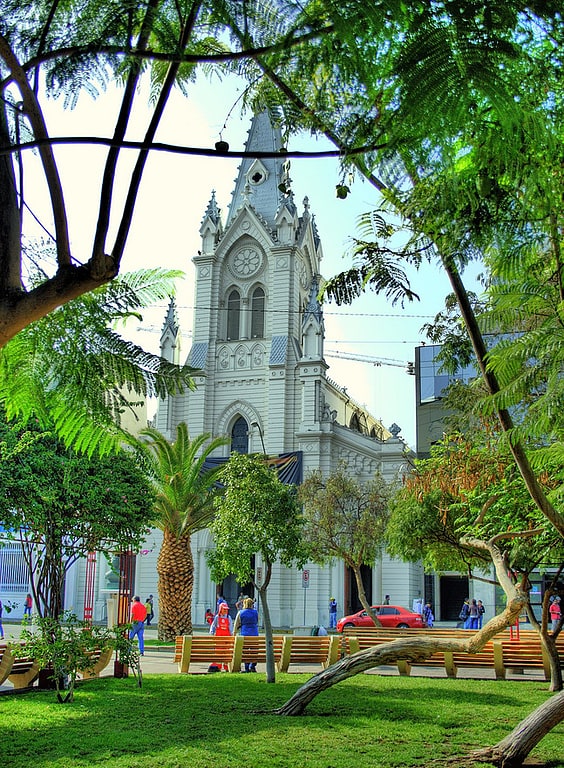
Also known as: Catedral de Antofagasta
Building in Antofagasta, Chile. The St. Joseph's Cathedral also called Antofagasta Cathedral It is a religious building of the Catholic Church located in the city of Antofagasta, northern Chile, opposite the Colón square, along San Martin Street.It is neo-Gothic style and has beautiful stained glass windows inside, was built between 1907 and 1917.
Its first version, built in 1872, was laurel tables. Two small bells and a triangle of steel placed on a pole protruding (4 to 5 meters high) were the belfry. He was devoured by fire in December 1880.
The first stone of this building was laid on November 15, 1907, an event that was attended by the ecclesiastical authorities of the time. The work of neo-Gothic style, was made by the architect Emile Doyer. The present cathedral was completed on September 17, 1917, although its symbolic inauguration had occurred in 1914.[44]
Address: 2634 José de San Martín, Antofagasta
St. Matthew's Cathedral, Osorno
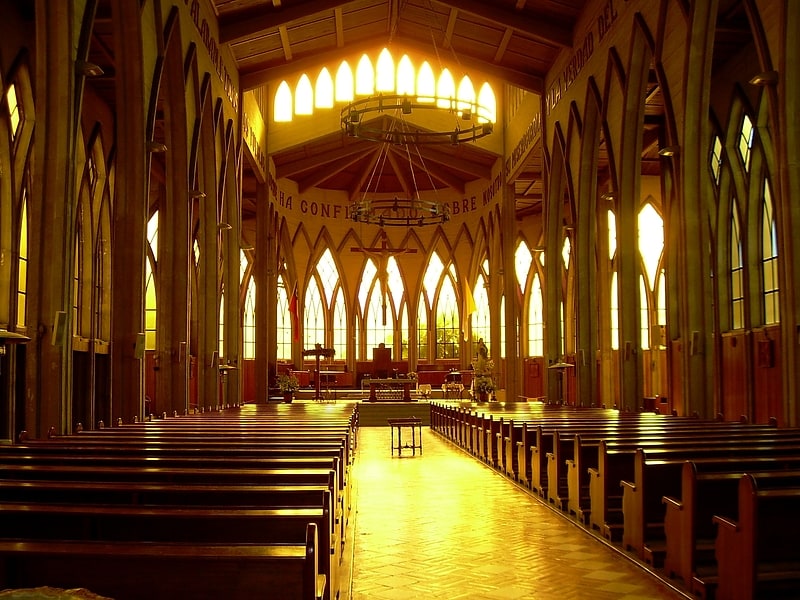
Also known as: Catedral de San Mateo de Osorno
Cathedral in Osorno, Chile. St. Matthew's Cathedral, also called Osorno Cathedral, is a Catholic cathedral located in the city of Osorno in the South American country of Chile.
St. Matthew's Cathedral is located in the vicinity of the Plaza de Armas of Osorno and is considered an architectural jewel of Gothic style, and a major tourist site in the city of Osorno. Its designer is the Chilean architect León Prieto Casanova.
It noted for its imposing tower 45 meters high and its large and colorful mosaics and stained-glass windows with representations of biblical figures.
The original cathedral was built in 1577. After the 1960 earthquake, which caused serious structural damage to the cathedral, there was total demolition.
The first stone of the new cathedral was blessed and laid on May 1, 1962, and 15 years later, on November 24, 1977, the new building was consecrated.[45]
Address: Manuel Antonio Matta, Osorno
Our Lady of Mount Carmel Cathedral, Puerto Montt
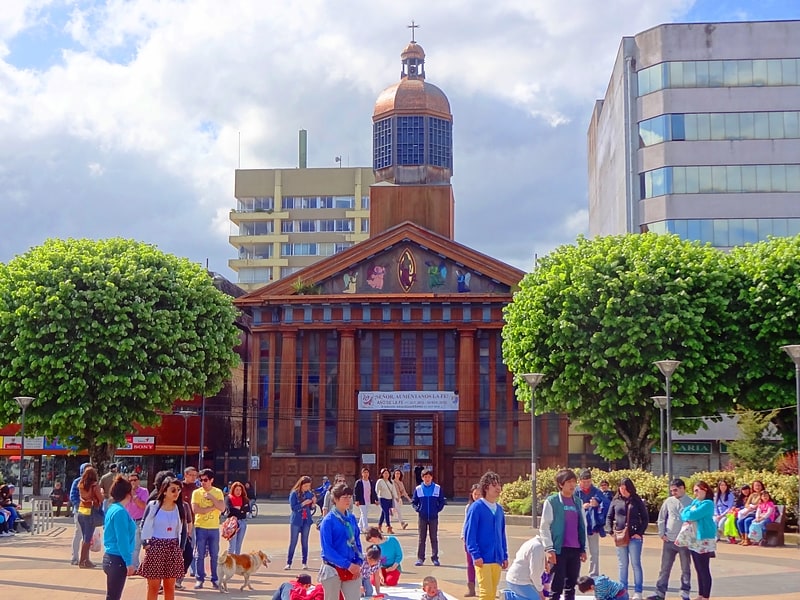
Also known as: Catedral de Puerto Montt
Cathedral in Puerto Montt, Chile. The Our Lady of Mount Carmel Cathedral Also Puerto Montt Cathedral Is a cathedral church of Catholic worship dedicated to the Virgin Mary under the invocation of Our Lady of the Carmen. It is located in the Plaza de Armas of Puerto Montt, and is the seat of the archbishop of the Archdiocese of Puerto Montt in Chile.
When the city of Puerto Montt was drawn by Vicente Pérez Rosales, he managed to have a plot of land in front of the square set aside to build a church, which was blessed as a parish in 1892. With the creation of the Diocese of Puerto Montt in 1939 By Pope Pius XII was elevated to cathedral. It was repaired in 1941 and then in the 1960s due to damage caused by the 1960 earthquake. In 1975 its interior was restored, and its last intervention was in the year 2002.
Its frontis presents four Doric columns that resemble the Parthenon. Its main structure is composed of native woods that form a planar system of beams resting on 12 columns of larch wood.[46]
Estadio Fiscal de Talca, Talca
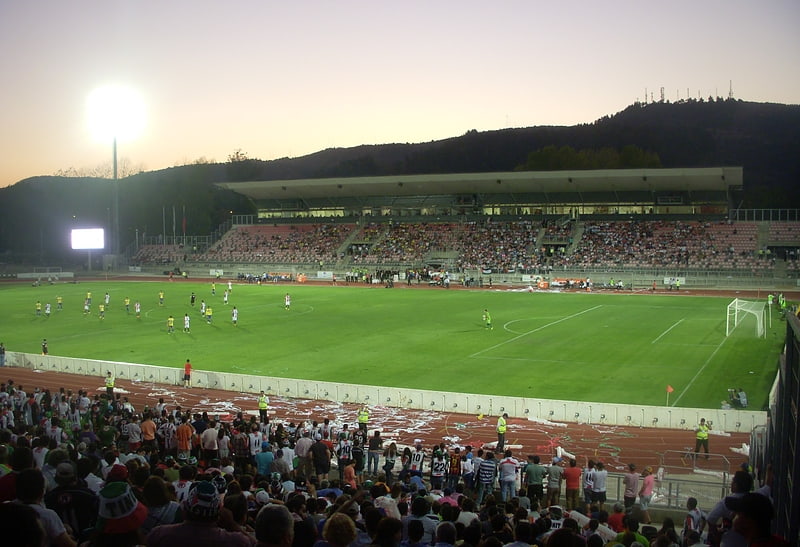
Stadium in Chile. Estadio Fiscal de Talca is a multi-use public stadium in Talca, Chile. It is currently used mostly for association football matches and is the home stadium of Rangers.
The stadium was built in 1930 as "Estadio Municipal de Talca". after seven years, in 1937, it would pass into the hands of the State and began to be called "Estadio Fiscal", with an original capacity of 17,000. In 2011 it was completely renovated, and currently holds 8,200 people (all seated).
In July 2017, the Government of Chile announced that the stadium will expand its seating capacity to 16,000 by building the North and South ends. The expansion will cost CLP $6,811,716,000 (USD $11,352,860) and is set to be completed in September 2018.[47]
Address: Av. Bernardo O'higgins, Talca
Holy Cross Church, Hanga Roa

Also known as: Iglesia de la Santa Cruz
Catholic church in Hanga Roa, Chile. The Holy Cross Church, also known as Hanga Roa Church or simply Catholic Church of Hanga Roa is the name of the religious building affiliated with the Catholic Church in the "Te Pito Te Henua" Street in the city of Hanga Roa, the capital and greater city of the Easter Island, a Territory of Chile in the Pacific Ocean.
The temple that follows the Roman or Latin rite was established in 1937 being its first priest Father Sebástian Englert. The building stands out for its external decoration and the gardens that surround it. Mainly remarkable is its facade that mixes Christian religious motifs and native elements.
It offers masses in Spanish and you can hear songs in the Rapa Nui language. In the inner part there are images carved locally that represent Christian saints, Jesus Christ and the Virgin Mary.
The religious services are attended by both Catholic faithful and tourists attracted by the architecture of the site.[48]